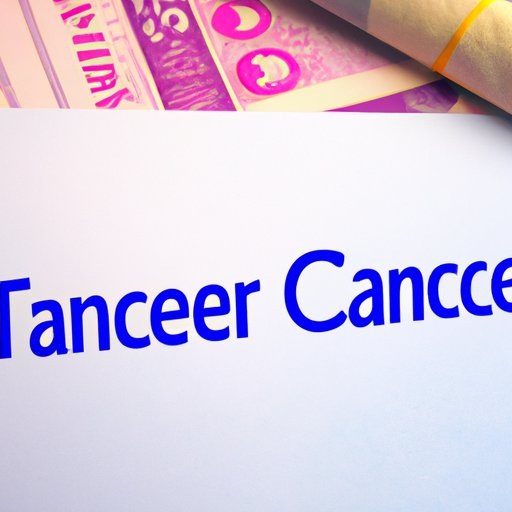
Introduction
A cancer diagnosis can be devastating for patients and their loved ones. While the medical aspects of cancer treatment are important, it is equally important to discuss the financial burden of care. Many patients face medical expenses, indirect costs, and lost income, which can be overwhelming and potentially catastrophic. This article aims to provide a comprehensive guide to understanding and managing the financial burden of cancer treatment.
The Cost of Cancer: Understanding the Financial Burden of Treatment
The overall cost of cancer treatment is high and can create potential financial hardship for some patients. According to the National Cancer Institute, the average cost of cancer care is estimated to be $150,000 per patient. Some patients may spend their entire life savings on treatment. In addition to medical expenses, indirect costs such as transportation, lodging, and child care may add up quickly.
From Diagnosis to Remission: A Breakdown of the Costs of Cancer Treatment
Cancer treatment requires various procedures such as chemotherapy, radiation therapy, and surgery. The cost of treatment can vary depending on factors such as type of cancer, stage of cancer, and location. The estimated cost of chemotherapy can range from $10,000 to $200,000, depending on the duration of treatment and drugs used. Radiation therapy can cost anywhere from $2,000 to $25,000 depending on the type of procedure and location. The cost of surgery can range from $10,000 to $100,000 depending on the complexity of the procedure.
Is Cancer Treatment Worth the Cost? Examining the Value of Medical Expenses
While the financial burden of cancer treatment can be daunting, it is essential to consider the potential benefits as well. Cancer treatment can be lifesaving or life-prolonging, and the value of medical expenses should not be overlooked. Patients must weigh the emotional and personal considerations of cancer treatment against the financial costs and consult with their healthcare providers to make informed decisions.
Navigating the Healthcare System: Finding Affordable Options for Cancer Care
There are different types of healthcare options available for cancer patients, such as private insurance, government-funded healthcare programs, and patient assistance programs. However, navigating these options can prove challenging. Patients can research clinical trials and alternative treatment options, which may offer lower costs or access to innovative treatment methods. Additionally, negotiating with healthcare providers for lower costs is a viable option to reduce medical expenses.
The Hidden Costs of Cancer: Unexpected Expenses and How to Manage Them
Cancer treatment can come with unforeseen expenses such as transportation, lodging, and child care. These expenses can make cancer treatment unaffordable for some families. To receive the necessary care, patients can explore local charities or non-profit organizations for financial support. Support groups can also provide resources for families to manage unexpected expenses. Moreover, many hospitals have social workers who can assist families with financial and emotional needs.
Conclusion
Cancer treatment is a complex and multifaceted process that involves financial, emotional, and physical aspects. The financial burden of cancer treatment can be overwhelming to families, but there are resources available to help manage these costs. Patients can consult with healthcare providers, explore different healthcare options, research clinical trials, and seek social support to help reduce the financial burden of cancer treatment. By understanding the costs involved in cancer treatment, patients can better prepare and manage the financial impact of the disease.





